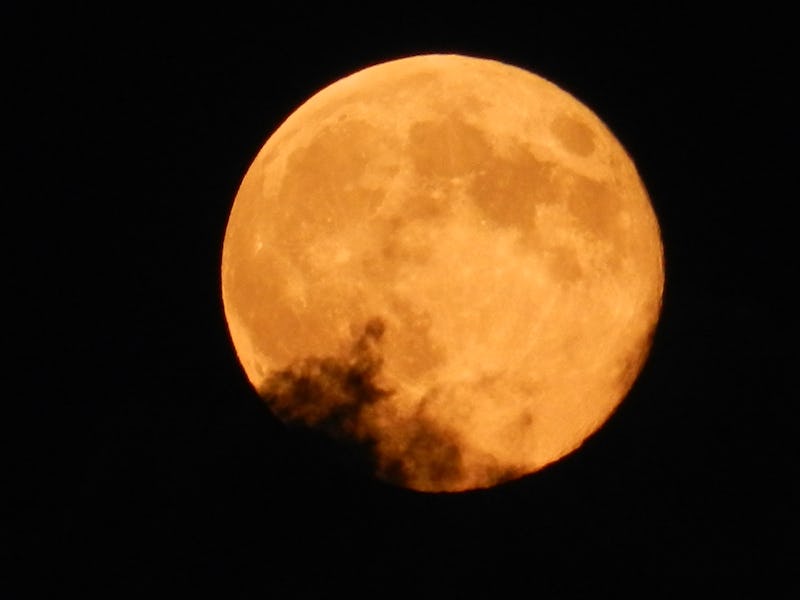Tonight's Full Moon Falls on the Spookiest Night in 13 Years
September’s Harvest Moon is on Friday the 13th.

On Friday night, star gazers will be treated to a full moon that not only marks the overturn of a new season but also happens to fall on the notoriously ominous Friday the 13th for the first time in 13 years.
Every month, the moon bears its full face to Earth dwellers when our planet sits right between the sun and the moon. As a result, the side of the moon facing the Earth becomes fully illuminated by the sun’s beaming light.
When the full moon falls closest to autumn, marking the end of summer and the beginning of fall, it is referred to as a Harvest Moon. Native Americans called it the Harvest Moon because it lit the night sky during corn harvest season, making it possible for farmers to work longer hours under its light.
This year’s Harvest Moon will take place at 04:33 UTC on September 14. For most of the nation, the moon will reach its peak brightness a little before midnight on September 13. However, if you’re on the East Coast, then technically the full moon won’t happen until after midnight, at 12:33 a.m. Eastern, but those 30 or so minutes shouldn’t exclude you from the Friday the 13th spook effect.
The last time a full moon fell on Friday the 13th was in January of 2006, and it won’t happen again until May 2033.
Some urban legends claim that the full moon is linked to more violent human behavior, and Friday the 13th is the culmination of urban myth and superstition, where it is believed that the day is marked by bad luck.
Another reason that makes this year’s full moon a rare occurrence — it’s a micromoon. We’ve already had five supermoons earlier this year, when the moon is closest to Earth during its full moon or new moon phases. And while those tend to get more hype, micromoons are harder to come by.
Micromoons are when the moon is at the furthest distance from Earth, called apogee, and appears around 14 percent smaller than a supermoon and slightly less bright. The average moon is usually somewhere between these two phases.
There are three more full moons left to observe in 2019; the next one will fall on October 13 and is named Hunter’s Moon to mark the season where one would start storing meat for the winter time.